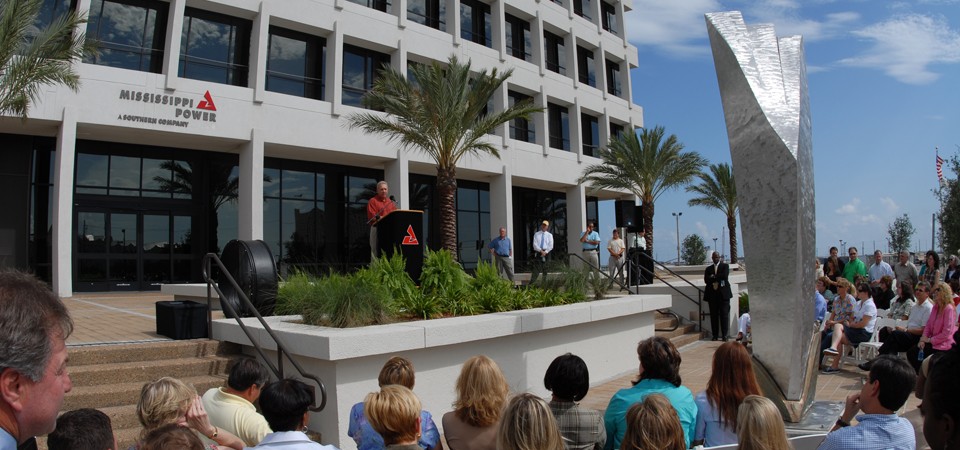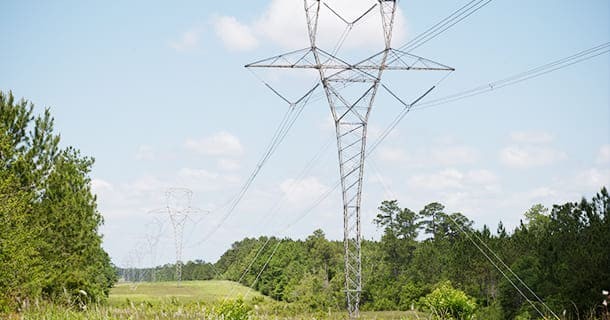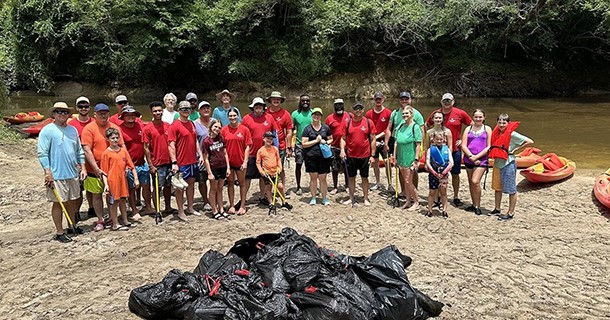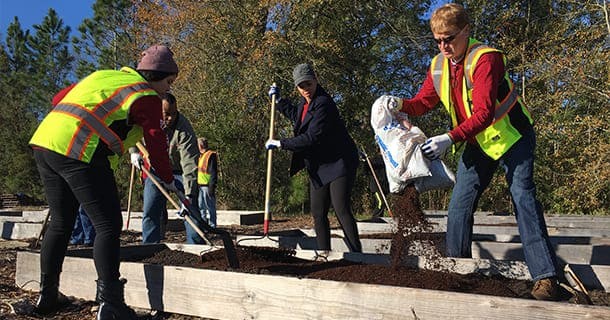Disaster Recovery - Hurricane Katrina
Hurricane Katrina was justifiably one of the worst natural disasters to ever strike the United States and certainly the worst to ever impact South Mississippi.
Getting the lights on and keeping the lights on is what Mississippi Power does best. Our approach to disaster preparation and recovery remains proactive to safely restore electric service to our customers as quickly as possible. This was even more important after Katrina and remains our plan today.
Hurricane Katrina: 15 years later
Prepare for the Worst, Hope for the Best
Prepare for the Worst, Hope for the Best
Each spring, well before hurricane season, storm plans are put in motion. Key materials like poles, transformers and wire are loaded on tractor-trailers and placed strategically throughout the service area. Key suppliers also increase plant inventory and earmark it for quick deployment of Mississippi Power's potential needs.
In 2005, like each year, every employee was assigned a storm duty station by June 1. Katrina was a minimal Category 1 hurricane before she hit Florida on Thursday, August 25, and just a tropical storm as she entered the Gulf of Mexico when the Mississippi Power storm team shifted into full response mode.
As Katrina quickly regained hurricane strength and began moving toward the northern Gulf Coast, preparations intensified. Fuel was purchased, suppliers put on notice, and buildings and staging areas were secured. The team knew Katrina was making its way to South Mississippi and encouraged employees and customers to brace themselves. As Katrina approached landfall, Mississippi Power employees manned their storm stations and hunkered down for what was to come.
Watch the path of Katrina at the National Weather Service archive.
Mississippi Power's fleet of 600 trucks would expand to a fleet of 5,000 trucks, operating out of more than 30 sites to respond to Katrina's devastation. The first arrivals were strategically placed so they could report for duty as soon as the winds died down.
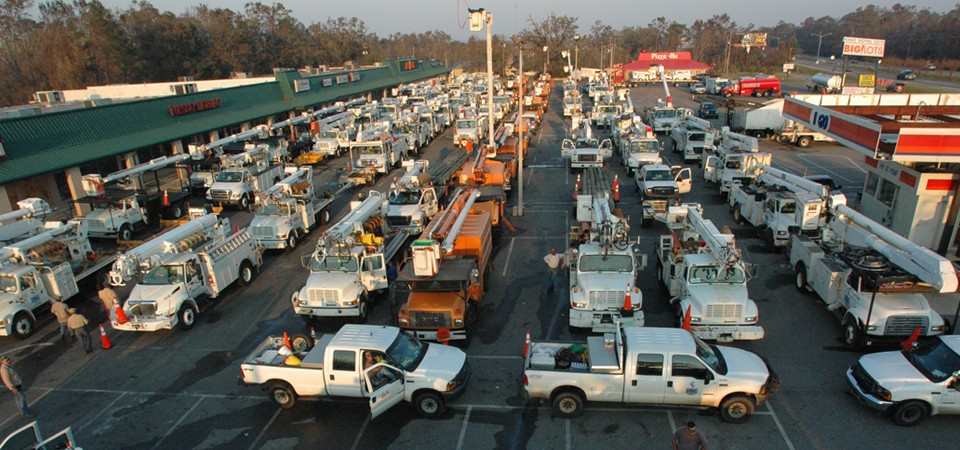
Surviving the Storm
After crossing the tip of the Louisiana marshlands, Hurricane Katrina made her second landfall in Hancock County. The eye of this storm was 25 miles wide. Hurricane Katrina's 140 mph winds and 28-foot storm surge devastated the entire Mississippi Gulf Coast. Hurricane force winds and tornadoes cut a swath of destruction over 200 miles inland.
As the storm surge worked its way up the Back Bay of Biloxi, Plant Watson in Gulfport was flooded with an estimated 16 million gallons of brackish water. About 80 employees were temporarily trapped during the storm in the upper level of the operationally destroyed powerhouse. Fortunately, due to mandatory evacuation, no one was stationed at the General Office across from the Port of Gulfport. A 28-foot wall of water crossed the threshold of the building, filling elevator shafts and the lower level of the building.
By the time Katrina's winds and storm surge finally subsided, 235 Mississippians had lost their lives. Every one of Mississippi Power's 195,000 customers were without power. Many along the Coast were without homes.
Katrina destroyed homes and livelihoods, but could not destroy the spirit of resilient Mississippians.
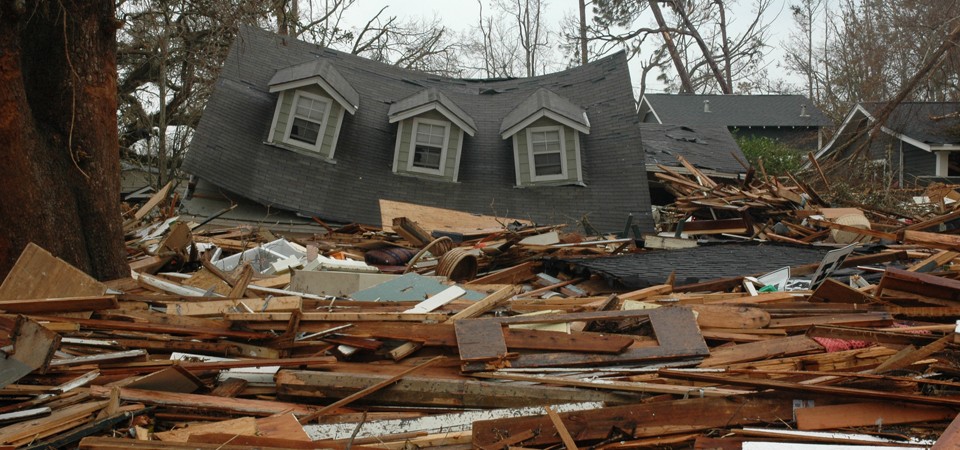
1,200 became 12,000 and restored power in 12 days
As first responders began to clear roads, Mississippi Power employees began to assess the catastrophic damage. Most Mississippi Power employees had damage to their homes. Almost 100 lost their homes entirely. But as soon as the winds subsided and with support from Southern Company Family Services, they put their own needs to the side and reported for duty. Employees had one goal in mind: get the power back on for their customers.
The call for assistance went out to other utilities and the nation responded. Mississippi Power's 1,200-person force quickly became an army of 12,000. Mississippi Power CEO Anthony Topazi set an aggressive goal and led the Storm Team to restore power in 12 days to all customers who could receive it. The Edison Electric Institute later honored Mississippi Power for its rapid Hurricane Katrina restoration with its prestigious Emergency Response Award.
How we did it:
- Utility workers and equipment came from all over the country and Canada. Each Mississippi Power employee was empowered to make decisions on the spot using their expertise and experience to restore power as safely and quickly as possible.
- The care and feeding of 12,000 workers was in itself an enormous task. It took 250,000 meals. Employees checked in and had laundries wash 93,000 pounds of clothing. People ate, washed up and slept in tent cities or wherever they could.
- The operation required up to 140,000 gallons of fuel daily and coordination with government and law enforcement officials to ensure its safe delivery.
- With all landlines and most cellular service destroyed, SouthernLINC Wireless radios, used by Mississippi Power employees, were the only means of communication.
- Surrounded by utter destruction, safety procedures were more important than ever. Despite the adverse conditions, only three minor injuries were reported.
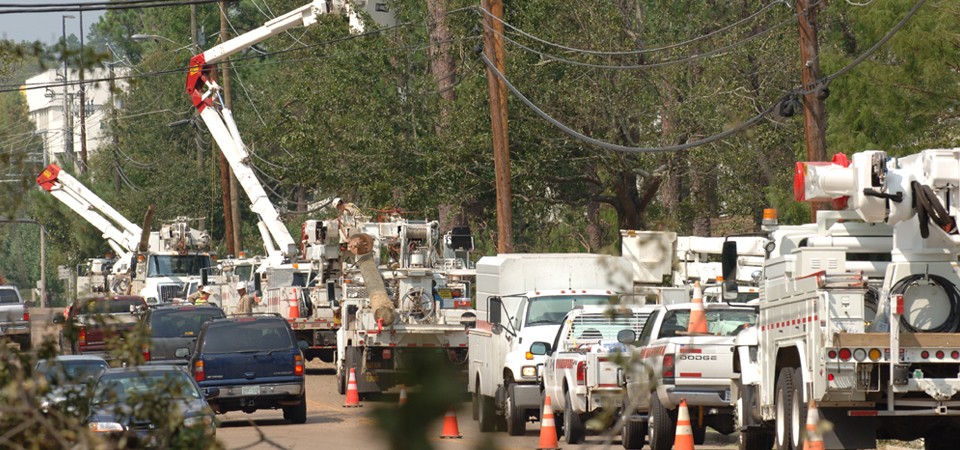
Recovery
Within days after Katrina, Gov. Haley Barbour named Mississippi Power President Anthony Topazi a vice chairman on the Governor's Commission for Recovery, Rebuilding and Renewal. The goal? Build back bigger and better than ever before.
In one of the first programs sponsored by the Governor's Commission, Mississippi Power leadership and employees joined planners, architects and civic leaders from home and around the country for a six-day 'charrette', or planning session to help provide the framework to successfully begin rebuilding our communities stronger than before.
Mississippi Power continues to help build stronger communities by supporting programs that create better community relations, promote economic development growth, improve education, and protect our environment and natural resources.
In addition to supporting local schools and teachers through the company's foundation, Mississippi Power employees spend time in camps and classrooms teaching the importance of science, technology, engineering and math to better prepare students for future careers and to develop a well-educated workforce.
Mississippi Power employees, joined by community volunteers, have removed almost 300 tons of debris - mostly deposited by Hurricane Katrina - from Southeast Mississippi waterways as part of the company's Renew Our Rivers program.
Since the company's inception in 1925, but especially after Hurricane Katrina - Mississippi Power, its foundation and employees have donated time and money to support partnerships and grants to help make our communities a better and more beautiful place to live, work and play.
Based on lessons learned from Katrina, Mississippi Power constructed a new Operations & Storm Center on higher, safer ground to increase protection of critical functions and better prepare the company to respond when the next storm hits.
No one knows if we will ever see another storm like Katrina, but there is one thing we can count on: Mississippi Power and the people of Mississippi will be ready.
